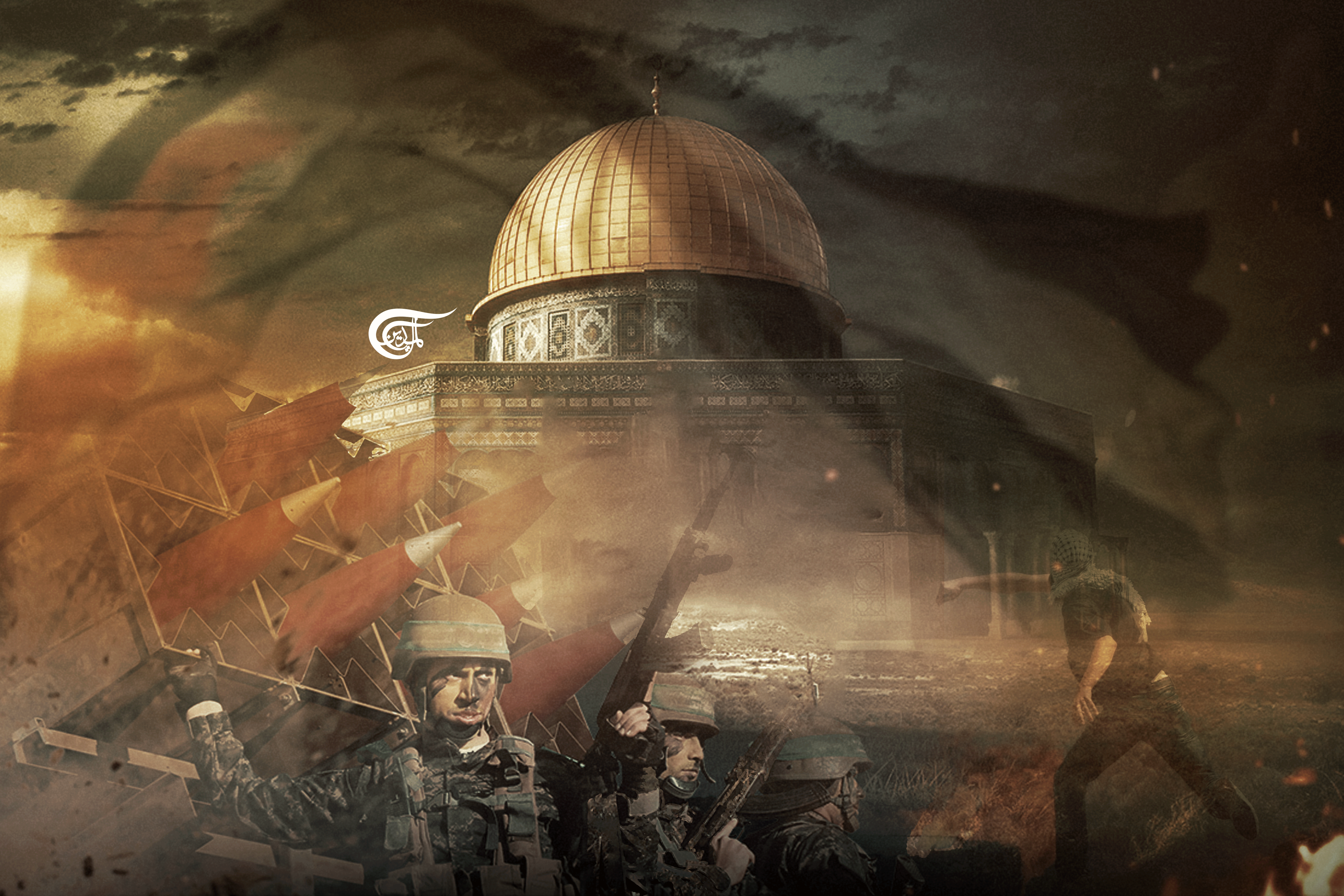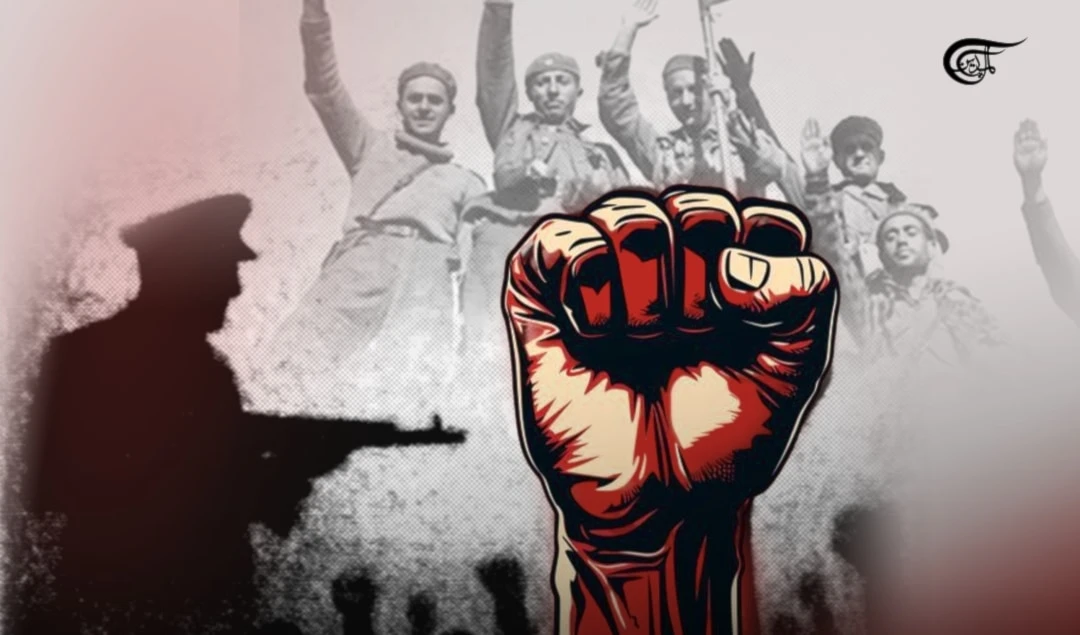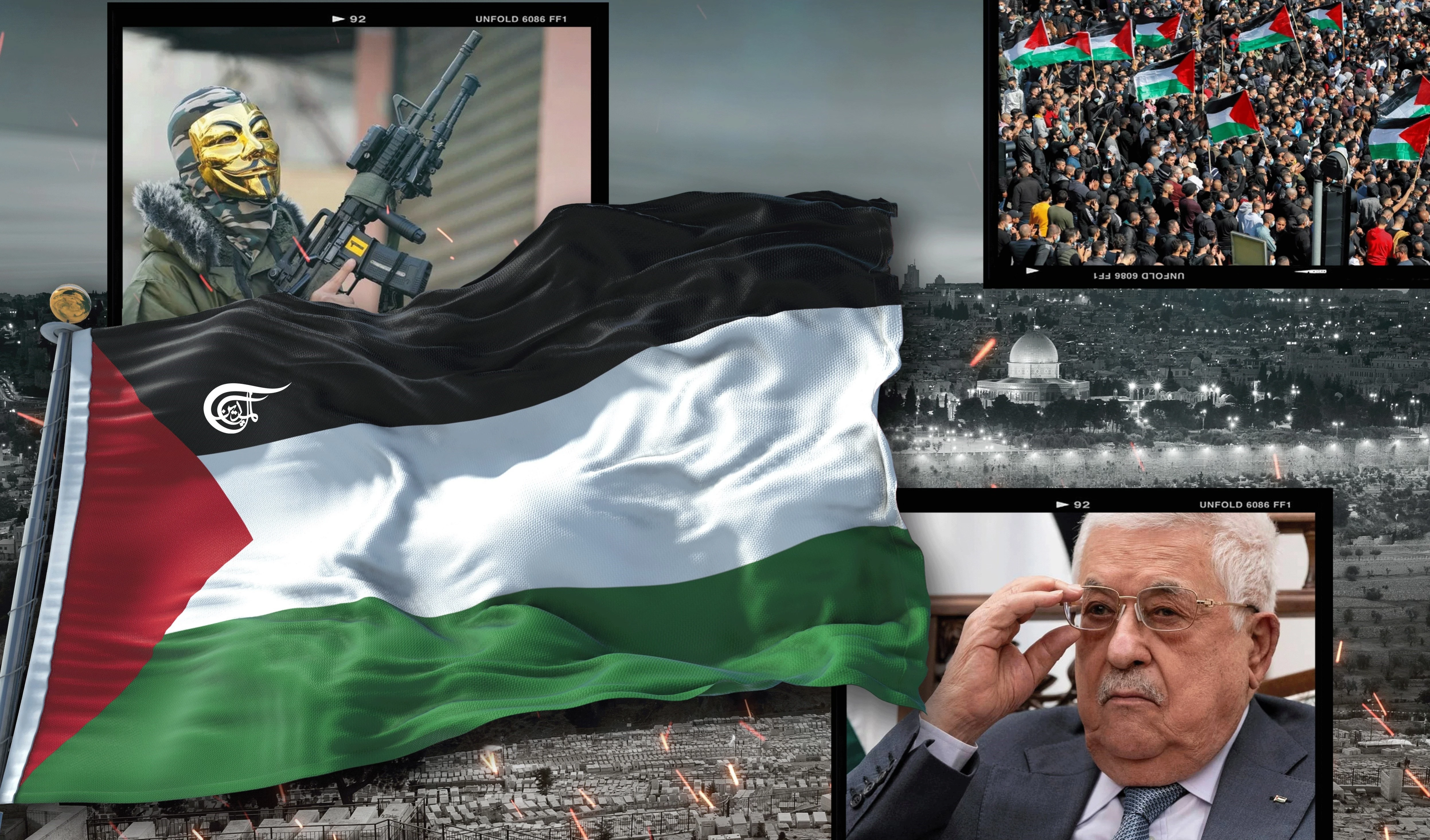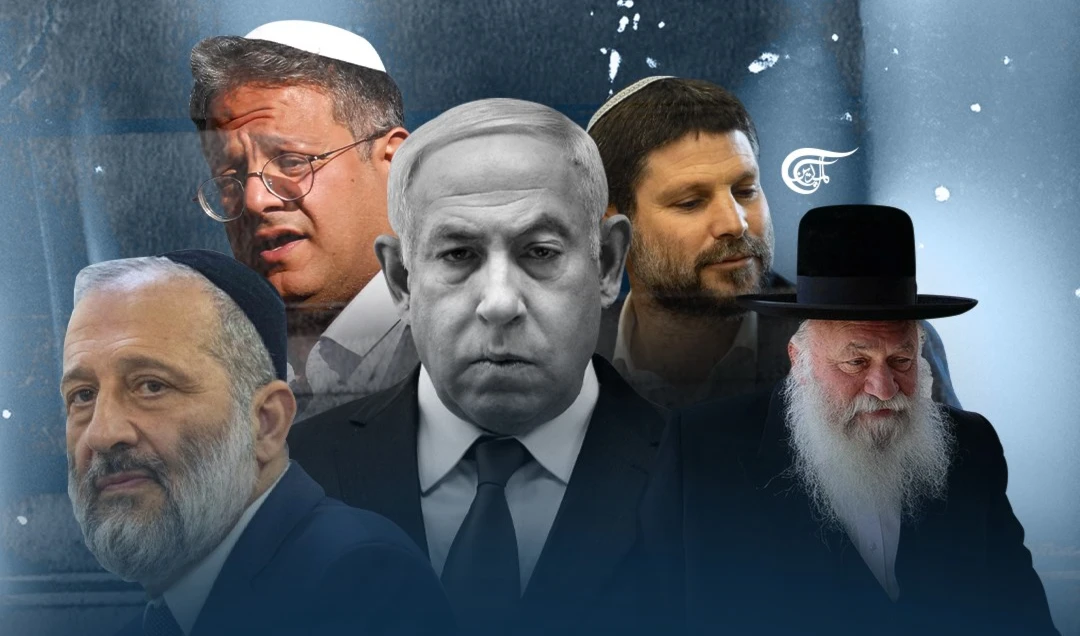From stones to missiles: Evolution of the Palestinian resistance forms and methods
The Palestinian resistance is now on the rise. With every passing day, its military capabilities are increasing steadily, and pledging more sacrifices and efforts.
-

From stones to missiles: Evolution of the Palestinian resistance forms and methods
After "Israel" invaded Lebanon in 1982, the Palestine Liberation Organization (PLO) was forced into yet another exile. PLO’s forces were stationed in far–away Arab capitals (Yemen and Algeria) and the PLO headquarters were moved to Tunisia. This major development resulted in a general decline in resistance activities inside and outside of occupied Palestine. The shock lasted for a few years during which “Israel”, backed by the US, tried to capitalize on its military achievement to turn it into a political triumph, hence the (Saudi) Arab Initiative for Peace in1982, the rapprochement between the PLO leadership and the Egyptian regime, and the increased activities of the collaborationist “villages’ leagues” in occupied Palestine.
That period of lull and uncertainty ended in 1987, when the first uprising (in Arabic: Intifada) erupted. The heroic military operation against the Israeli army, using gliders, launched from Southern Lebanon, was very inspiring to the Palestinian people under occupation and revived the belief in resistance and revolution. The Intifada was very widespread among the masses, far exceeding the framework of the Palestinian organizations. Popular struggle against occupation; demonstrations, strikes, and closures, was its main feature. Brave young people confronting the heavily-armed Israeli troops and throwing stones at them, attracted the eyes of the world. Stone became the symbol of the Intifada. The Stone Revolution was actually a popular invention, considering the lack of support, the absence of infrastructure for armed struggle, and the state of encirclement imposed by “Israel” on the Palestinian people.
The Dark Nineties
After the Iraqi invasion of Kuwait in 1990 and the subsequent Gulf war, the first phase of the Intifada ended. The PLO got engaged in extensive series of public and secretive negotiations with “Israel”, that resulted in the “Oslo Agreement” in 1993 and the formation of the “Palestinian Authority” in the major cities of Gaza and the West Bank. As for the Palestinian struggle and resistance, the nineties were very bad years! The “Palestinian Authority (PA)” joined “Israel” in its battle against anybody who plans for, or even thinks of, fighting the Israeli forces. That happened under the banner of “security coordination” according to the terms of the infamous Oslo Agreement. Life became very difficult, if not impossible, for the real freedom fighters, especially in the environment of fake peace that took over the whole region. Jordan joined in and signed the “Wadi Araba Treaty” with
“Israel”, and with Egypt already having its “Camp David Accords” with “Israel”, the prospects for armed struggle against the Israeli occupation became gloomy. With Iraq defeated and isolated, Libya under sanctions, and Algeria in internal turmoil, Syria was pushed by the Arab League to join the negotiations process in the middle east – sponsored by the Clinton administration in the US (though it maintained its political stance towards the Palestinian cause and did not sign any bilateral deal with “Israel”). The only country in the middle east that maintained its support for the Palestinian right to liberation via armed struggle and remained vocal in its opposition to the so-called “peace process”, was Iran. But Iran at that time was very busy in major internal rebuilding after the eight-year destructive war with Iraq (1980 – 1988). Iran’s focus was on helping the Lebanese resistance to liberate the Southern part of the country – still under Israeli occupation.
Under these circumstances, popular and mass resistance actions were no longer possible, so the Palestinian revolutionaries turned to other methods targeting the Israeli occupation, particularly explosive devices and booby traps, individual attacks, and martyrdom operations carried out by small groups and orchestrated by a few individuals – planners. However, by the end of the nineties, “Israel” – with real contribution from the Palestinian Authority – was able to eliminate the active masterminds of that kind of armed resistance, and things in Palestine appeared as if the Israel-PA partnership is working.
The Second Intifada
In the year 2000, negotiations between PLO’s Yasser Arafat and Israel’s Ehud Barak reached a deadlock and collapsed. Arafat failed to get anything tangible or meaningful in return for his years-long cooperation. In the meantime, scenes came from Southern Lebanon of the humiliating and disgraceful Israeli withdrawal under the strikes of Lebanese armed resistance.
Pragmatic in nature, Yasser Arafat decided to use the armed struggle as a means of pressurizing the Israelis. He had done that repeatedly in the past, while in Lebanon. Arafat hinted to his aides to bypass the security coordination with “Israel” and he relied on the Palestinian guerilla fighters. It didn’t take long for the second Intifada to break out. It quickly turned into a wave of strong and impactful martyrdom operations against “Israel”, the biggest of which was in the town of Netanya where 30 Israelis were killed on 27 March 2002.
Despite the large scale of the Israeli invasion of the PA territories, the massacre in the Jenin refugees camp, and the encirclement of Yasser Arafat in his headquarter, the Palestinian revolutionary spirit didn’t weaken, especially in the Gaza strip. Arafat passed away in 2004 and his successor, Mahmoud Abbas, was much less charismatic and powerful. In 2005, “Israel” came to the conclusion that the Gaza strip was a “lost cause” and decided to unilaterally withdraw its forces from there. The net result of these developments was a stronger presence of the armed resistance organizations in Gaza, particularly Al-Qassam group, the military wing of the (Islamic) Hamas movement, which started working almost openly.
Build up of Palestinian Military Capabilities
2007 was a landmark. Hamas movement managed to expel the security apparatus of the PA and imposed its control all over the Gaza strip. Since then, the “golden era” of the armed Palestinian resistance began. The fighting groups, particularly Al-Qassam and “Saraya Al-Quds”, were inspired by the Hezbollah struggle against “Israel” in Lebanon, and gradually started moving in the direction of military professionalism, with brigades and hierarchy. They quickly established links to Iran’s Revolutionary Guards, headed by Hajj Qassem Soleimani, and to Hezbollah in Lebanon. For its part, “Israel” traced and thwarted several attempts to stop smuggling weapons from Iran to Gaza via the Red Sea, Sudan and Sinai. It also assassinated Hamas’ military wing liaison officer, Mahmoud Al-Mabhouh in Dubai. Hosni Mubarak’s Egypt, in turn, arrested the Hezbollah commander, Sami Shehab, in charge of channeling military aid to Gaza in 2009. Despite all that, and the very complicated logistics situation, it was evident that significant technical and financial support did reach Gaza and enabled the resistance movements to start with a “local production” program for military tools and means, though simple and limited.
With the repeated Israeli attacks and encounters, the Palestinian resistance movements gained substantial military experience and became more effective. In 2014, the Palestinian armed resistance launched rockets that landed inside “Israel”, though with limited precision and range. “Israel” was getting very worried about the developments in Gaza and tried its best to eliminate the scientific and qualified personnel of the resistance in Gaza. “Israel” actually managed to assassinate senior leaders from the Palestinian military wings responsible in particular for the missiles programs, notably among them was Baha’ Abul Atta of Saraya Al-Quds, and before him Ahmad Al-Ja’abari, the deputy commander of Al-Qassam brigades. But the momentum gained by the resistance movements in Gaza didn’t vanish. On the contrary, military wings became even stronger and their work became systematic – not dependent on specific persons. When the Americans assassinated Hajj Qassem Suleimani early in 2020, the role that he played in building the Palestinian military capabilities came into public. The leaders of all armed wings of the Palestinian movements spoke very warmly of him and expressed their gratitude for his help and leadership. On the Palestinian front, Hajj Qassem cared for one thing only: unity against the Zionist entity (Israel). He whole-heartedly believed that Zionist injustice in Palestine will have to come to an end, sooner or later.
During Saif Al-Quds Battle
In the last encounter of 2021, known as Saif Al-Quds, the much-improved military capabilities of the Palestinian military wings came into display. Within a few days, thousands of missiles were successfully launched from Gaza and reached their targets deep inside “Israel”. The Palestinian movements also formed a joint operation and command room to coordinate activities and responses. The Israeli army, and its “Iron Dome” defense system, failed to down the Palestinian rockets. “Israel” didn’t dare to carry out ground operations in Gaza and was no longer able to sustain prolonged military operations due to the internal turmoil caused by the Palestinian missiles which practically “froze” the Israeli economy for days. A state of deterrence was established with “Israel” as if it were between two armies. That was a remarkable success for the Palestinian resistance. The days when the Israeli army was able to wander in Gaza without expecting a damaging response were long gone. The Palestinian resistance was able to impose new realities on the ground. It’s a new era, that of the “missile” resistance. No more knives or stones throwing.
The Palestinian resistance is now on the rise. With every passing day, its military capabilities are increasing steadily, and pledging more sacrifices and efforts. The new generation in Palestine is more determined than ever before to liberate its country. And it’s not over yet.

 Hussam AbdelKareem
Hussam AbdelKareem
 9 Min Read
9 Min Read











